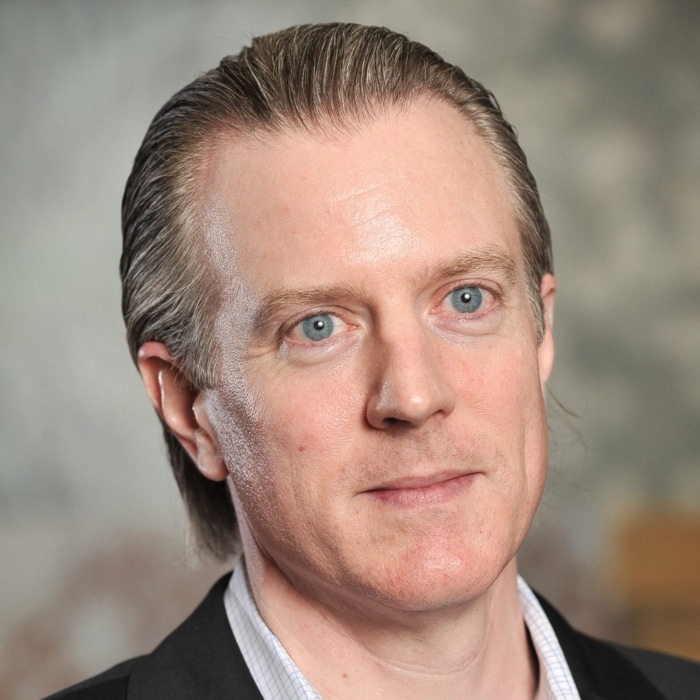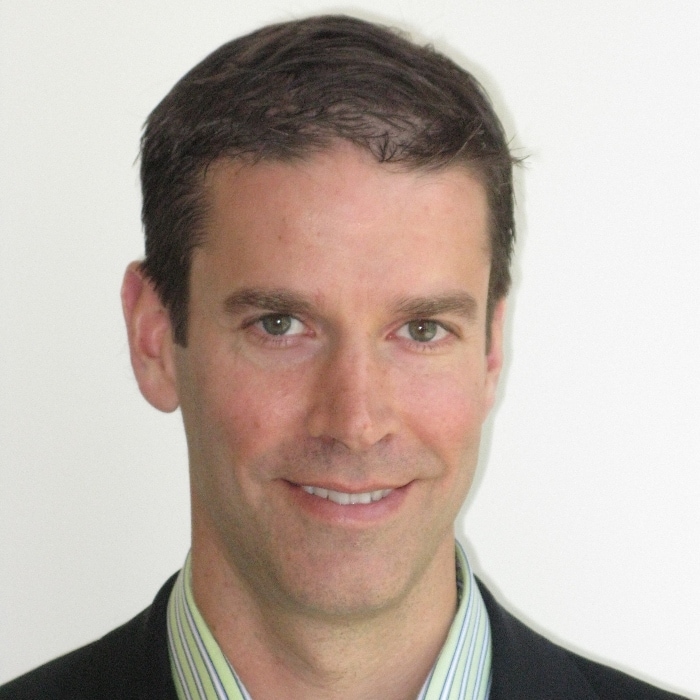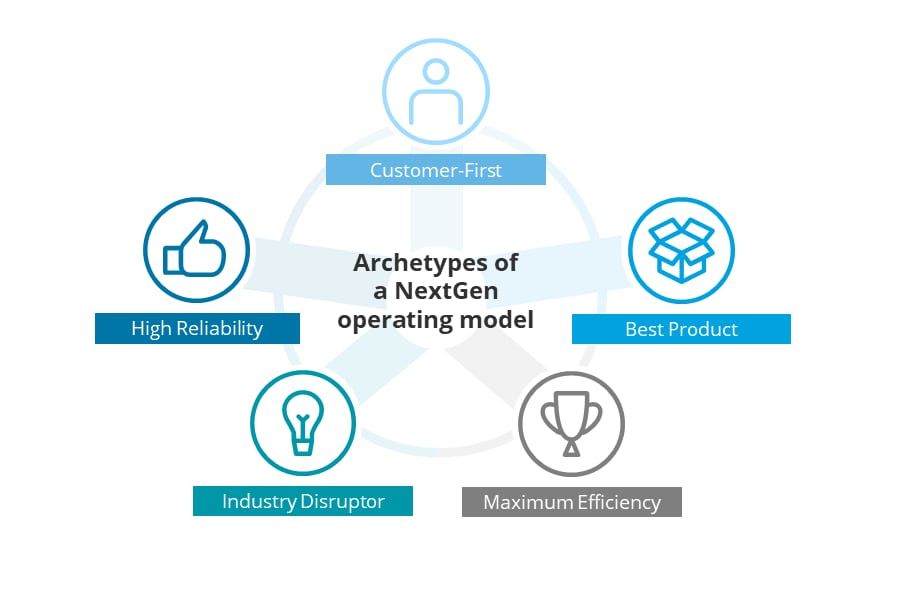So, you’ve decided to evolve your operating model, what’s next? has been saved

Perspectives
So, you’ve decided to evolve your operating model, what’s next?
COO Agenda
Redesigning your operating model to best meet customer needs and achieve your business ambition is challenging and often requires tough choices. Explore how operating model archetypes can accelerate the design process, drive consistent, informed design decisions, and guide transformation efforts in a way that is aligned to your strategy and business model.
Explore content
- What are the five operating model archetypes?
- Which archetype(s) are right for me?
- Executing on your chosen archetype(s)
- Get in touch
Once you decide to modernize your operating model, the next step is to configure and build capabilities in a way that is right for the organization. A common pitfall is trying to be good at everything, which adds complexity, requires additional resources, and reduces focus. But how do you make operating model design decisions consistently in a way that is aligned to your strategy and business model?
We’ve found that leading organizations use archetypes to make strategically sound, value-creating design decisions. Those decisions include:
- What the overarching business model will be.
- How to enable customer, employee, and external ecosystem partner journeys.
- Which services will be delivered and how.
- What the key roles and optimal organization structure will be.
- What the redesigned processes will look like.
- How to simplify and modernize the technology architecture.
What are the five operating model archetypes?
Deloitte has identified five archetypes that will guide operating model decisions. Let’s explore them one by one.
Customer-First organizations inform their decisions with a clear understanding of customer needs and preferences, all of which are sourced from—and proliferate throughout—the organization and embedded into the operating model design. They offer new combinations of boundary-spanning products, services, and information to meet specific needs and requirements. Customers receive differentiated experiences with highly personalized, omnichannel products and services. Examples of differentiating capabilities for Customer-First organizations include:
- Customer account management
- Marketing and consumer insights
- Matured agile delivery
Under this archetype, the focus is on differentiated products and services, including delivery method. Organizations strive to connect their product or service to other customers and products in ways customers can’t do for themselves. Autonomous business units drive product development, with product teams often located closer to customers so they can deliver newer products faster than the competition and charge a premium based on that capability and/or product brand. Examples of differentiating capabilities for Best-Product organizations include:
- New product development
- Brand management
- Research and development
Organizations with a maximum efficiency archetype focus on getting from input to output as quickly and cost-effectively as possible so that customers receive the most economical option—often leveraging economies of scale. They cultivate operational discipline to develop a single, integrated management system with ideal flow. Advanced technologies help streamline and automate key internal processes. Examples of differentiating capabilities for Maximum-Efficiency organizations include:
- Service operations
- Analytics and reporting
- Sales and operations planning
With this archetype, organizations view themselves as fundamentally different from industry or sector peers (e.g., “we’re a data organization that happens to sell insurance”). They challenge established industry paradigms with radical new concepts and approaches, enabled by agile capabilities, transformative technologies, and an entrepreneurial culture that embraces change. A defining trait is flexible decision-making and capabilities to drive continuous innovation. Examples of differentiating capabilities for Industry-Disruptor organizations include:
- Data and analytics
- Technology delivery
- Talent development
Organizations that follow a high-reliability archetype have a strong focus on exceptional consistency to persistently accomplish goals, avoid potentially catastrophic errors, and deliver consistently safe and high-quality service. They maintain high attention to identify anomalies, with an acute focus on resiliency to contain errors, while adapting to maintain operations. This archetype will not be relevant to all industries and organizations. An example where this archetype is applicable is in health care (explore the path to high reliability in health care). Examples of differentiating capabilities for High Reliability organizations include:
- Quality management
- Operational resiliency
- Process management/improvement
Which archetype(s) are right for me?
An operating model archetype doesn’t have to be a singular choice. Usually, organizations have a dominant archetype plus one or two secondary archetypes. But anchoring on a dominant archetype in your operating model transformation is important because it guides often tough design decisions, particularly as they relate to aspirational customer, employee, and external ecosystem partner journeys. Secondary archetype(s) are important because when combined with the dominant archetype, they often help create the competitive differentiation that our clients seek.
While each of the five archetypes has proven successful in the market, the one that’s right for your organization is the one that best meets your business strategy and ambition, customer and stakeholder needs, and corporate social responsibility.
Archetypes in action: A leading US wealth manager launches a new bank offering
A wealth manager took a customer-first approach when launching a new banking business to serve millions of clients across the United States. To do this, the wealth manager invested in technology to deliver a market-leading integrated digital and in-branch client experience across wealth and banking. The wealth manager also designed client-centric processes and interactions between financial advisers and banking middle- and back-office teams. This ultimately reduced friction when originating and servicing checking, savings, and secured lending products.
While banking and wealth experiences and processes were seamlessly integrated, the new banking business was profitable by taking a maximum efficiency approach, leveraging the middle- and back-office capabilities of an external bank client that also provided core and ancillary banking technology platforms.
Executing on your chosen archetype(s)
After you select the operating model archetype, what’s your next move? In our next blog, we’ll talk about how archetypes impact customer, employee, and external partner journeys, and how those journeys translate into decisions on which capabilities to prioritize and build.
Building NextGen operating models for the future
Article 1: Why changing your operating model is necessary to remain competitive in today’s market
Article 2: So you’ve decided to evolve your operating model, what’s next?
Article 3: Keeping the customer experience at the center of your operating model
Get in touch
 |
Joe Alt Principal Operating Model Transformation Leader |
 |
Rob Kaye Principal Operating Model Transformation Leader |
 |
Brendan Houng-Lee Senior Manager Operating Model Transformation Leader |
Recommendations
Target Operating Model Design
Explore how organizations must navigate tradeoffs across capabilities in alignment with their target operating model design or risk getting lost in the crowd as they attempt to do everything .
Operations Transformation
Reimagine business operations consulting



